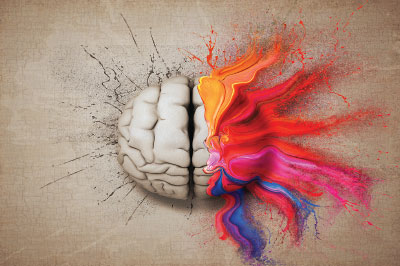Early Life Trauma Changes Biology of Brain
Abstract
A complex interaction of genes and severe stressful events in childhood raises the risk for later psychiatric and chronic illnesses.
“Early life adversity is the single biggest determinant of psychiatric illness, greater even than genetics,” Charles Nemeroff, M.D., Ph.D., said to attendees of a presidential symposium at the APA Annual Meeting in May.

Childhood trauma is not uncommon, said Nemeroff, a professor of psychiatry and director of the Institute of Early Life Adversity Research in the Dell Medical School at the University of Texas at Austin. According to a Centers for Disease Control and Prevention (CDC) survey, 16% of adult respondents reported childhood physical abuse, 11% reported sexual abuse, and 35% reported emotional abuse. The CDC also estimates that at least 1 in 7 children in the United States has experienced abuse and/or neglect in the past year.
The effect of these adverse childhood experiences is becoming clearer, Nemeroff said. Studies show that children who are abused are at a greater risk of posttraumatic stress disorder (PTSD), anxiety, depression, and substance use disorder later in life. Early life adversity is also a risk factor for diabetes, stroke, and premature mortality and for worse financial and educational outcomes.
Human biology contributes to these effects, said Nemeroff. One biological domain in particular is the hypothalamic-pituitary-adrenal (HPA) axis, which regulates the body’s response to stress. In a study of women with major depressive disorder (MDD), Nemeroff and colleagues found that women with a history of childhood abuse and a current major depression diagnosis exhibited a higher cortisol response and a more than six-fold greater adrenocorticotropic hormone (ACTH) response to a stress test than age-matched controls.
“It turns out that the increased levels of cortisol and corticotropin-releasing factor [which stimulates the production of ACTH] that we see in depression are really artifacts of early life trauma and suggest that cortisol changes the set point of the stress response system,” Nemeroff said.
Levels of oxytocin, a neuropeptide involved in social bonding, are lower in people with a history of early life adversity, added Nemeroff, which may reduce their capacity for attachment and intimacy.
Evidence also shows that inflammatory markers like interleukin 6, which is correlated with depression severity, increase following stress. The resulting inflammation may be what connects early life stress with later-life risk for heart attack, stroke, and diabetes, Nemeroff explained.
Genetic factors alone do not determine later-life conditions, but they do contribute to risk. According to one study, adults aged 18 to 26 years who were severely maltreated between the ages of 3 and 11 years had an increased risk of depression—but only if they also had the variant of the 5-HTT gene that is associated with an increased risk for psychiatric disorders including depression. Similarly, adults who were abused as children and have the risk variant of the FKBP5 gene have greater PTSD symptom severity. Other studies suggest that mutations in the corticotropin-releasing hormone receptor 1 gene CRHR1 combined with early trauma and abuse may increase sensitization of the HPA axis in people with the anxious subtype of depression.
“Different types of abuse result in different structural changes in different parts of the brain, but we need to know more,” Nemeroff said. For example, he said the brains of adult women who experienced sexual abuse as children differed structurally from those of women who experienced emotional abuse as children.
These differences in brain biology also may interfere with treatment, said Nemeroff. One study of patients with MDD found that those who experienced abuse specifically between the ages of 4 and 7 years old were 1.6 times less likely to achieve a response following eight weeks of antidepressant treatment.
“The [challenge] with treating these people [with a history of childhood adversity] is that they have a different brain biology in depression and anxiety, even if the severity seems the same.”
The question for the future is how to intercede to lessen the long-term, neurobiological consequences of child abuse and neglect, said Nemeroff.
“How can we prevent these sequelae after we identify early life adversity?” he said. “Everyone wants to do the right thing, but how do we do the right thing when we don’t know what the right thing is for patients with these divergent childhood experiences?” ■
Information on child abuse and neglect is posted here. “Pituitary-Adrenal and Autonomic Responses to Stress in Women After Sexual and Physical Abuse in Childhood” is posted here. “Influence of Life Stress on Depression: Moderation by a Polymorphism in the 5-HTT Gene” is posted here. “Association of FKBP5 Polymorphisms and Childhood Abuse With Risk of Posttraumatic Stress Disorder Symptoms in Adults” is posted here. “Childhood Trauma Predicts Antidepressant Response in Adults With Major Depression: Data From the Randomized International Study to Predict Optimized Treatment for Depression” is posted here.



